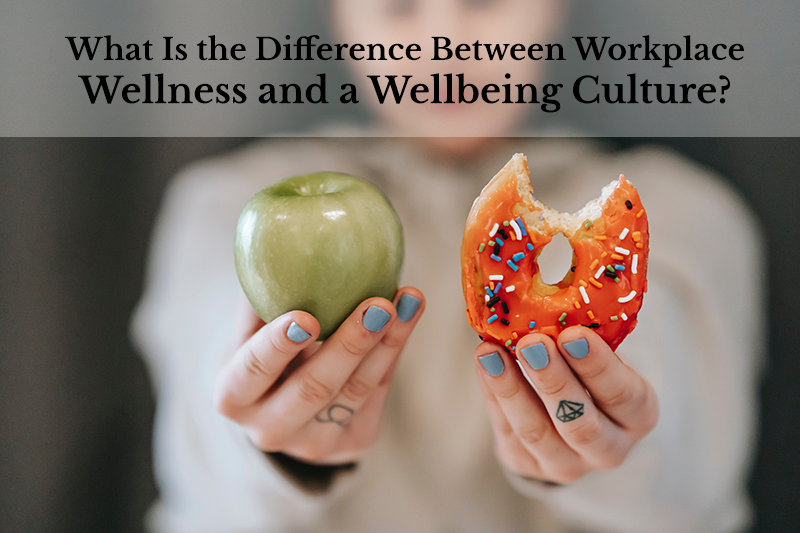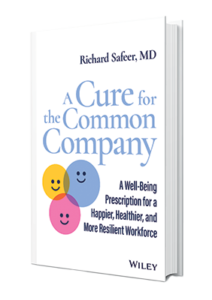The “healthiest” employer in the city.
That’s commonly the issue title of city-based magazines. It serves to highlight corporate citizens; sometimes even when they are not healthy. The conclusions might be based on easily identifiable metrics including wellness programs and benefits. But employees know better whether they are in a well-being culture or not. They know that donations are made, hands shake, and ‘healthiest’ employers make the headlines.
My friend worked for one such company. It was a place of excruciating stress, poor leadership, unethical decisions, and the painful ritual of year-end layoffs only to see hiring pick up by January 2nd. The dichotomy was hard to miss. For outsiders and the media, the organization was touted as the epitome of good health and wellness. For those within, the reality was diagonally opposite.
Toxic workplaces
When an organization’s culture becomes toxic, negativity becomes its default mode. It seeps into all employee behaviors and transactions. This isn’t to suggest that its leaders are oblivious to this toxic culture. In response, they roll out wellness programs to reduce stress.
But several studies have pointed out that the standard-issue wellness initiatives produce little to no effect. One such study found no noticeable difference in health outcomes and clinical markers of health. That is to say that despite these programs, employees at these workplaces develop everything from heart disease to poor mental health.
Employees who are burned out are 23 percent more likely to seek the services of an emergency room. Due to workplace stress, the economy loses 550 million workdays every year. That’s the cost of workplace negativity. That’s also a reflection of the ineffectiveness of the current wellness programs.
There must be something more. Programs and benefits can be helpful and are part of the solution. However, they are not a panacea and certainly not competition for a negative workplace culture.
Shortcomings of workplace wellness
Despite their honorable intentions, workplace wellness programs seldom deliver holistic improvements to organizational cultures. This happens because these initiatives focus on individuals when the problem requires a collective reboot of the working environment.
Any program that emphasizes the role and behavioral change of the individual may be forgetting the impact of the ecosystem. People get conditioned to act in certain ways because the prevalent norms expect and reward them to do so. Therefore, to support individual change, organizations need to change their wellbeing culture first.
Furthermore, programs have a start and finish date. But healthy cultures make wellbeing always available. One doesn’t have to sign up to be healthy when it’s the default mode. In other words, wellbeing is not an event, like a once-a-year marathon. Wellbeing is a state.
Defining a wellbeing culture
Wellbeing isn’t achieved through transactional or half-hearted programs. How could it be?
Wellbeing is an optimal state of being healthy, happy, and optimistic as influenced by a complex web of social, physical, mental, and financial influences. An organization can influence this web to support healthy beliefs and behaviors by endorsing and institutionalizing positive values, a good social climate, healthy norms, and peer support.
It’s the formal and informal alignment of policies, leadership practices, and procedures including resource allocation, acceptable behaviors, speech, and modeling. That’s the hallmark of a wellbeing culture.
Wellbeing will be the natural state in such a culture. Nobody must initiate programs or hold events with friendly metrics (although they are welcome). The culture will deliver continuous and positive influences on employees’ behaviors, attitudes, beliefs, and emotions.
A wellbeing culture addresses aspects of wellbeing neglected by wellness initiatives including social and emotional wellbeing, a sense of community, a shared vision, and a collective positive outlook.
Ingredients of a wellbeing culture
In my more than two decades working with companies and researching employee health and wellbeing, I’ve concluded these six building blocks are needed to support a wellbeing culture:
- Leaders should be trained to lead with an institutionalized focus on well-being
- The company’s shared values should include the health and well-being of its employees
- The culture should make employees feel like they’re part of a family with a positive social climate and communal well-being
- The norms in the workplace should reflexively support and encourage collective healthy behaviors
- The organization should create an environment where co-workers (peers) support each other, which would organically lead to collective well-being
- All culture connection points (direct and indirect messages) should align with health and well-being
It must be noted here that conventional workplace wellness programs focus almost exclusively on the last building block, culture connection points. Most companies are missing 5/6 of the puzzle! Wouldn’t you rather have a four-course meal with appetizers and an open bar than just a sandwich for dinner?
Well-being cures negativity
Gallup estimates that employee turnover costs US companies $1 trillion every year. A 2017 survey found out that organizations that focus on a culture of health can reduce turnover by around 11 percent. The American Psychological Association found out that 91 percent of employees feel motivated when company leadership supports initiatives focused on employee health and well-being.
The antidote to toxicity is a culture of well-being. Unlike the organization that my friend used to work for, companies with such cultures may not get publicly awarded as the healthiest company in their city. But they will be rewarded with healthy, happy, and fulfilled employees.
To learn more about shaping the well-being culture in your workplace, you’ll want to read, ‘A Cure for the Common Company: A Well-Being Prescription for a Happier, Healthier & More Resilient Workforce’.


